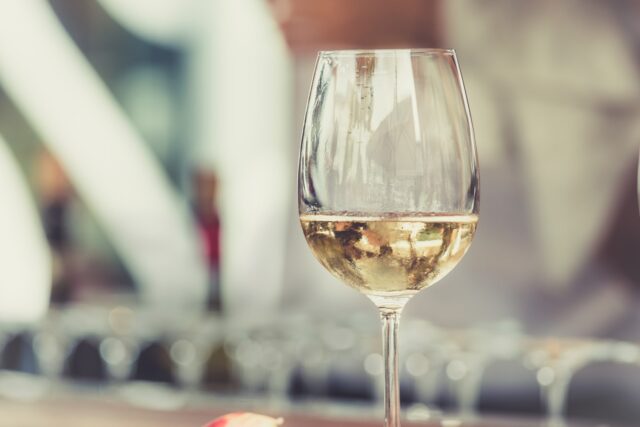A Priory addiction expert warns that an increase in the popularity of trendy gins risks contributing to the UK’s ‘drinking problem’.
Dr Paul McLaren, a consultant psychiatrist who treats alcohol addiction at Priory’s Hayes Grove hospital in Kent, and Priory’s London Wellbeing Centres, says: “The drinks industry tries to dress up gin to attract new young, and particularly female, drinkers.
“The prefix ‘craft’ conveys a worthiness which deflects attention from its potency and potential toxicity. Marketing initiatives have done a good job in distancing it from the ‘hard’ spirits like whisky and vodka. Gin has had ‘good’ publicity. It has been presented as a genteel drink with an appealing flavour. Gin may be more finely distilled and combined with novel tastes, but it is no less toxic when drunk to excess.”
The consultant’s warning comes as supermarket, shop and online sales of gin shot up 30% in the 12 months to March 27, compared to the previous year.
This rise comes despite the fact that bars and restaurants were closed for large periods of the year, underlining the popularity of the spirit as people’s go-to tipple of choice at home. Around 30 million of the bottles sold were of the trendy ‘flavoured gin’ variety.
Meanwhile, a negroni – equal parts gin, vermouth and Campari – has been described by The Guardian as the ‘cocktail of 2021’, going from ‘arthouse to blockbuster’.
Dr McLaren said social media was playing its part in the rising popularity of some gin drinks, such as pink gin.
“Photos are central to any social gathering so photogenic drinks are popular. From alcopops onwards, marketing strategies have become more subtle with more complex colouring and flavours designed to soften their image and ‘impress’,” he said.
“No matter how refreshing it seems, it is the amount of alcohol which enters our system which does the damage whether neat, on the rocks or in a trendy coloured bottle mixed with something worthy.”
Bottomless brunches were a particular concern; “Anything promoted as ‘bottomless’ comes with a hidden cost. This is encouragement to over-indulge. Boozy brunches with the potential for drunkenness early in the day risk wiping out that day and the day after. If you are not used to drinking in the day then you may misjudge your levels and risk driving over the limit.”
A gin and tonic made with 37.5% ABV gin contains 37.5% pure alcohol. The higher the percentage, the more alcohol is in the drink. ‘Small-batch’ or ‘boutique’ gins can contain considerably higher ABV.
A gin and tonic made with a single 25ml measure of 37.5% Alcohol by Volume (ABV) gin contains 0.9 ‘units’. So drinking 14 gin and tonics – 2 a day for a week – made with this same amount of gin means a person will consume nearly 13 units. If a person drinks doubles, they’ll be over the guidelines after 8 gin and tonics in a week. (The Government’s guidelines are to drink no more than 14 units a week, and experts suggest several alcohol free days a week.)
Dr McLaren said binge drinking remains a particular issue as does the cheapness of alcohol. Canned gin and tonics are being sold for as little as £1.80.
“Binge drinkers will commonly believe that they aren’t problem drinkers. Physical dependence, when you ‘need’ to drink every day to ward off withdrawal symptoms, is not the only drinking problem. Heavy, binge drinking can be every bit as harmful to drinkers, to their families and their bank balance, as physical dependence.”
Binge drinking – drinking lots of alcohol in a short space of time or drinking to get drunk – is frequently defined as drinking more than 6 units in a single session for women or 8 units for men. Six units is defined as 2 pints of 5% strength beer or 2 large (250ml) glasses of 12% wine. Eight units is 5 bottles (330ml) of 5% strength beer or 5 small (125ml) glasses of 13% wine.
More than three-fifths of UK adults have no idea how much alcohol constitutes binge drinking, according to a recent Priory poll.
Last year, deaths directly attributable to alcohol misuse rose to a 20-year high in England and Wales. The Office for National Statistics said there were 7,423 alcohol-specific deaths in 2020, up 20% on the previous year and the highest annual death toll since records began in 2001.[3]
Four out of five alcohol-specific deaths in 2020 – defined as being a direct consequence of alcohol misuse – were from alcoholic liver disease. A further 10% were from mental and behavioural disorders due to alcohol use, and 6% accidental alcohol poisoning.
Research showed that the coronavirus pandemic created conditions for more people to drink more heavily and more often, with many putting themselves at serious risk of harm from their regular, and increasingly heavier, alcohol consumption.
Polling before the pandemic estimated 1.5million adults drank at least 50 units every week — the equivalent of three pints or nearly a bottle of wine every night.
But this jumped to just shy of 2.5million this summer.




